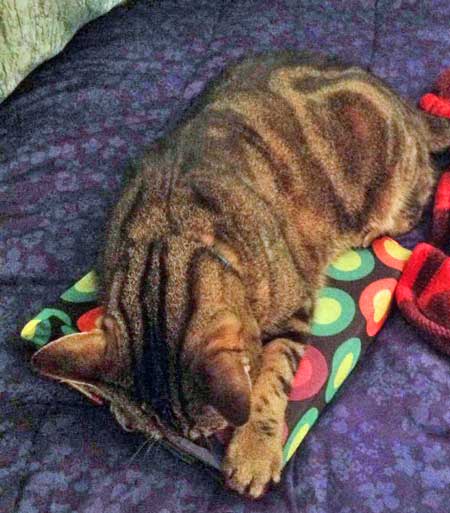The time when the blotched or classic tabby pattern, as it is called, emerged among domestic cats is of interest to people in the cat world. The tabby coat is the most common in domestic, stray and feral cats. This is unsurprising because the wild cat ancestor of the domestic cat, the North African wildcat, has a rather diluted, striped tabby coat which is referred to as a mackerel tabby.

Nowadays there are three types of tabby coat namely the mackerel tabby mentioned above, the classic or blotched tabby and the spotted tabby. The mackerel and spotted tabby merge somewhat which is noticeable on the wildcat which is also referred to as the African-Asian wildcat.

A study published online in PDF format on the nature.comA website reports on their investigation of the evolution of the tabby pattern. They concluded that their study “sheds light on the late emergence in domestic cats of…the blotched coat marking”. The scientists concluded that the first occurrence of the recessive allele W841X, which is responsible for 80% of present day tabby cats with the blotched-tabby pattern, dates to the Ottoman Empire in Southwest Asia which was founded at the end of the 13th century in northwestern Anatolia. The occurrence of this coat type later increased in frequency in Europe, Southeast Asia and Africa. The emergence occurred about 8,800 years after the first wildcats were thought to have been domesticated.

In the European Middle Ages (ended: 15th century) and the Egyptian New Kingdom, there are images of mackerel-tabby patterned domestic and semi-domestic cats. It is only in the 18th century that blotched tabby cats were seen relatively commonly. Thereafter in the 19th century people started to select physical traits to breed cats which culminated in the beginning of the cat fancy (cat breeding and showing) in the very late part of the 19th century.

The scientists also say that in the early times of cat domestication, many thousand years ago, if there was selective breeding of any sort it was for behavioural traits perhaps to create excellent mousers rather than for their coat type. Thus emphasising the need at that time to live with utilitarian animals rather than animals which primarily looked good and kept their owners company.
A: The palaeogenetics of cat dispersal in the ancient world.

